2009 Holy Land Tour - Turkey
Part 1 - Istanbul
Click on Photos and Charts for larger version
Today, I am going to report on our recent trip to Turkey. This was my 5th trip to the Holy Lands. We call them Holy Land Trips because they represent places mentioned in the Bible. For me, since 2003, this has included Israel, Jordan, Egypt, Turkey, Greece and Rome.
Before getting into the actual trip, let me talk about the place Turkey plays in Scripture. Some of the places mentioned in the Old Testament are located in what today is Modern Turkey.
• Mount Ararat – The mountain on which Noah’s ark rested at the end of the flood.
• When Abraham left Ur of the Chaldees, he and his family migrated northwest to what became known as the city of Haran. Haran is in southeastern Turkey.
• When Abraham’s servant, Eliezer, was sent to find a wife for Isaac, he went to Padan-Aram [Haran is in Padan-Aram]. That would be in Turkey today.
• When Jacob worked 14 years for Laban, he was in what today is Turkey.
• The Hittite people are mentioned 21 times in the Bible. They were located in central Turkey. Their capital city was Hattuşa – about70 miles north of Cappadocia.
• Both the Euphrates and Tigris Rivers begin in eastern Turkey.
In the New Testament, an even greater portion is related to the area of Modern Turkey. Four N.T. books are written to people in Turkey:
- Galatians
- Ephesians
- Colossians
- 1 Peter
In the book of Acts, all of chapters 13 through 27 take place in Turkey, except for the first church council in Jerusalem mentioned in chapter 15.
One book – First Corinthians, was written from Ephesus (Modern Turkey).
One book – First Timothy, was written to Timothy while he was in Ephesus.
All of the Seven Churches in Revelation 2 & 3 are located in Turkey.
The first place where the followers of Jesus were called “Christians” was in Antioch, which today is in Modern Turkey.
In early church history, two of the major church councils occurred in Turkey.
• 325A.D. - Council of Nicaea (Modern Iznik)
• 431A.D. - Council of Ephesus.
Now, let’s get on board and fly to this nation that in size is slightly larger than the state of Texas. From west to east, the country is more than 1,000 miles in length. From north to south it is about 500 miles.
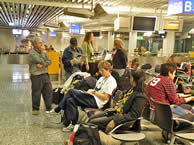
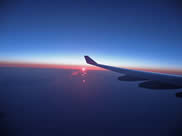
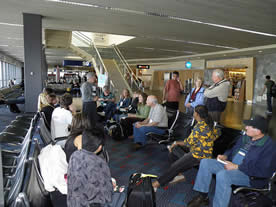 Here is a group picture awaiting our flight at Seatac. The first leg of the trip is a lengthy 9½ hours to Frankfurt, Germany. Here is a picture of the sunset taken from the plane. Or is that a sunrise? The fact of the matter was we were flying well above the arctic circle, therefore, the sun never did completely set. I don’t know about the others, but I seldom sleep on the airplane.
Here is a group picture awaiting our flight at Seatac. The first leg of the trip is a lengthy 9½ hours to Frankfurt, Germany. Here is a picture of the sunset taken from the plane. Or is that a sunrise? The fact of the matter was we were flying well above the arctic circle, therefore, the sun never did completely set. I don’t know about the others, but I seldom sleep on the airplane.
Here we are in the Frankfurt, Germany airport awaiting our next leg. This leg from Frankfurt to Istanbul is about 3 hours. I didn’t sleep during this flight either. We are picked up at the Istanbul airport by a Talisman Tours guide. Its about a 30 minute ride to our hotel – the Germir Palas. Here we finally arrive – and are congregated in the lobby of the Hotel.
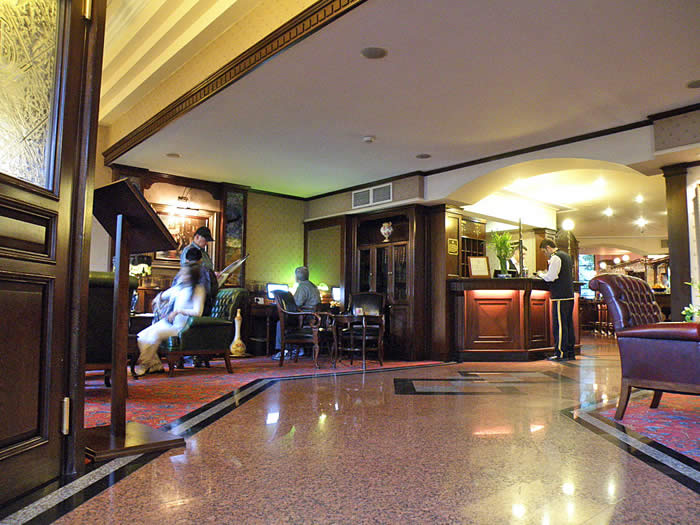
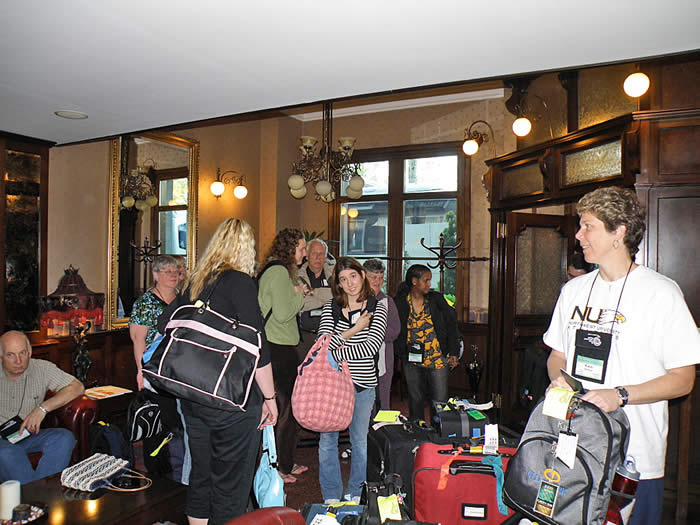
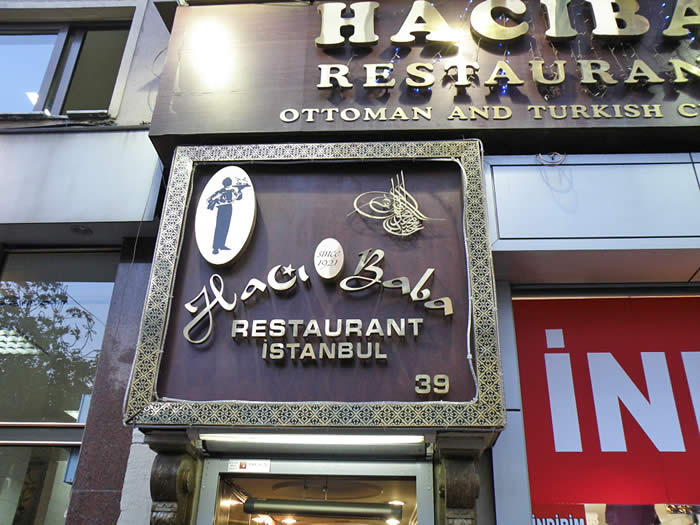
The hotel was nice, and located near one of the main plazas in the Old City. We couldn’t get our phone cards to work on this trip, so the free use of the computer came in handy to send Paula e-mails. Here you see Dr. Braddy at the keyboard. And Paul is reading a newspaper in English.
It still wasn’t very late in the day when we arrived at the hotel. The itinerary had reservations for us at a authentic Turkish restaurant. We walk from the hotel to the restaurant. Here is a picture of the plaza I mentioned a moment ago. It’s name is Taksim Square or Plaza. We had reservations at the Haci Baba Restaurant.
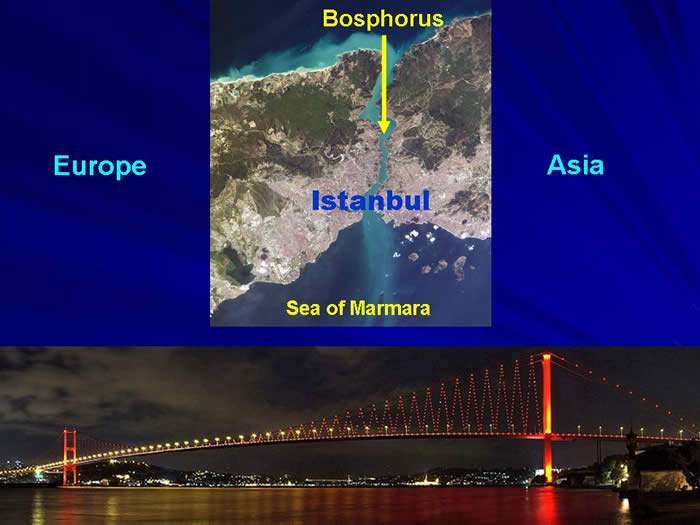
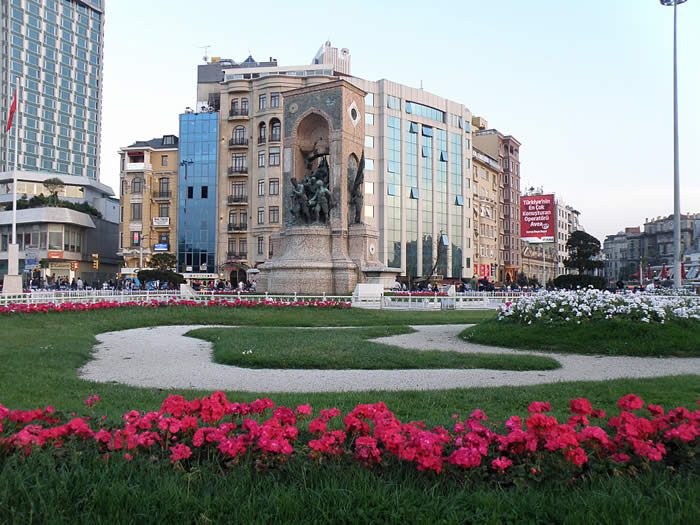
After a night’s rest, we are off to see some of the sights of Istanbul. By the way, Istanbul is the only city in the world located on two continents – Europe and Asia. Istanbul’s history does not go back as far as most of the ancient sites we visited on this trip. Its history prior to 100 B.C. is very scarce, although it is known that people lived there. But it wasn’t a major city until the 1st century B.C..
It was during that first century before Christ, that this city became part of the Roman Empire. And in 306 AD, Emperor Constantine the Great made this city, then called Byzantium, the capital of the eastern Roman Empire. The city later became known as Constantinople, and in the 15th century, it was changed to Istanbul.
Blue Mosque
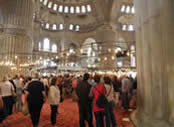
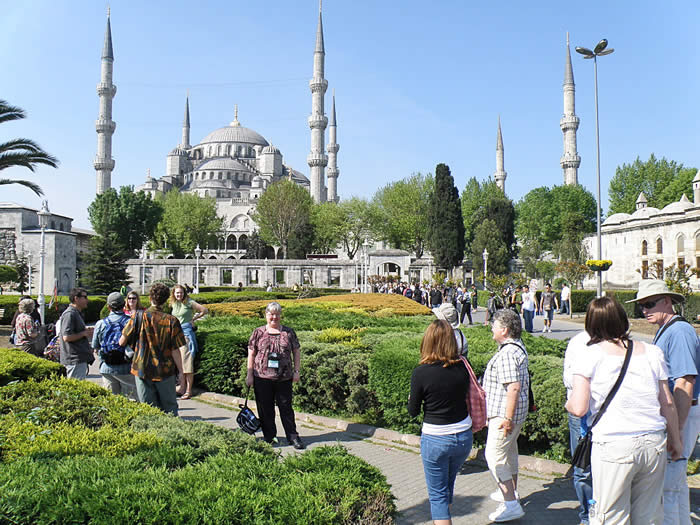
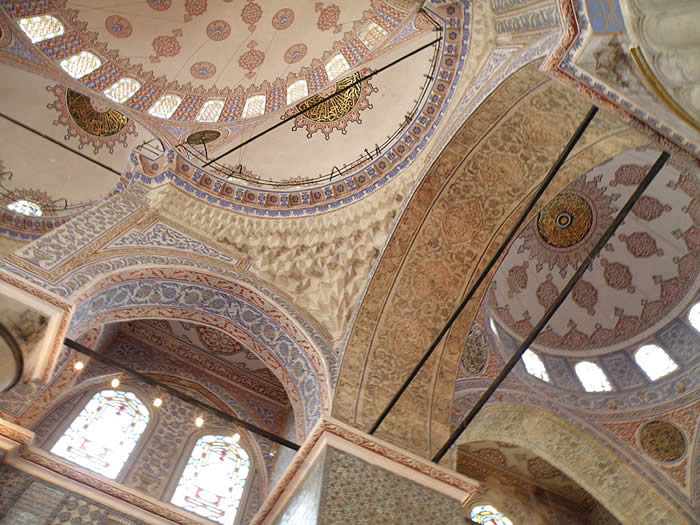
The first place we visited was the Blue Mosque. It was built between 1609 and 1616. It has a large dome and a number of smaller domes, The Sultan at that time wanted it to have a dome larger than the Hagia Sophia church, which I will show you in a few minutes. But the designers were not able to achieve their end to have such a large dome.
Nevertheless, the building is huge and, in its own right, an architectural marvel. Not counting the courtyard, the mosque stands almost perfectly square, and is covered by a dome 77 feet in diameter and 140 feet high. There are four colossal standing columns, each 16’4” in diameter. They provide the support for the dome. The mosque has 260 windows. One must take off their shoes when going inside any mosque. We were allowed to enter and take pictures.
One thing that distinguishes a mosque from a church is that in a mosque there are no mosaics or frescoes of people. The patterns are ornate, but uniform and symmetrical.
Hagia Sophia
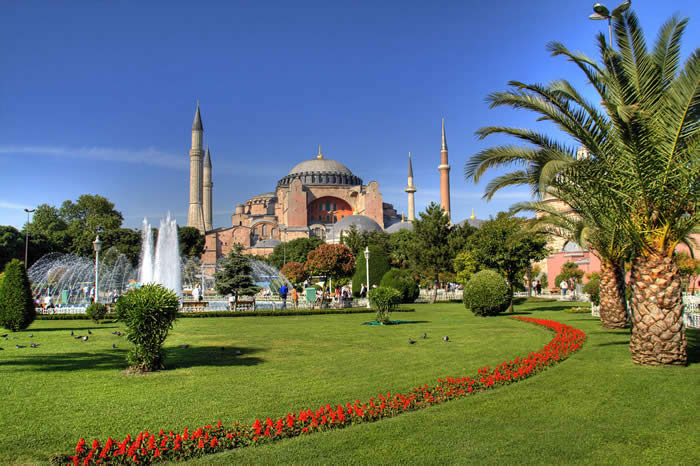 The next place we visited was just a couple of blocks from the mosque. Even more than the Blue Mosque, the Hagia Sophia is one of the most extraordinary buildings in the history of architecture. Hagia means “divine” or “sacred,” and Sophia means “wisdom.” It was for centuries considered the mother church of all Eastern Orthodox churches.
The next place we visited was just a couple of blocks from the mosque. Even more than the Blue Mosque, the Hagia Sophia is one of the most extraordinary buildings in the history of architecture. Hagia means “divine” or “sacred,” and Sophia means “wisdom.” It was for centuries considered the mother church of all Eastern Orthodox churches.
There are some major renovations occurring right now, so getting some photos of the entire dome is not possible. But, still, there is plenty of other things of a photographer's interest.
Constantius II, the son of Constantine the Great, had this church built. The church was first completed in 360 AD. Unlike many of the early Christian churches, This church was not named for a saint. At first it was given the name “Megala Ekklesia” – meaning, “The Great Church”, because it was the largest at that time. Later it became known as Holy Wisdom. In Latin, that’s Sancta Sophia, Hagia Sophia in Greek, and Aya Sofya in Turkish.
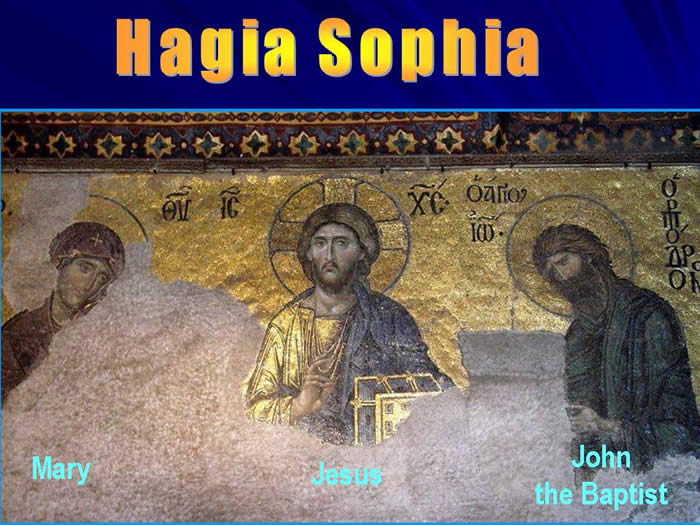
The dome of this church is 105 feet in diameter and stand 184 feet high. Through the centuries, earthquakes have damaged the church, but not in a major way. As I mentioned a few minutes ago, Mosques do not have images of people. But the early churches did – images of people or depictions of angels. The frescoes in the Hagia Sophia are magnificent.
In the sixth century, after a fire had burned much of the church, the Roman emperor Justinian I, being a strong Christian believer, wanted this church rebuilt and used as a means for enlarging the scope of Christianity. The church served as the heart of the empire, and the coronation of all Byzantine emperors occurred here.
When the Turks conquered Constantinople in 1453, one of the first things they did was to convert this church into a mosque. That is why the church today has 4 minarets. Those were later additions. And that is why you see four round signs in Arabic inside the church.
At left is a fresco that has been marred. The reason is, when the Ottomans turned this church into a mosque, they plastered over the people images since they don’t allow them. Since 1923, they have carefully uncovered the frescoes by removing the plaster. Some, however, are beyond complete repair. This is a fresco of Jesus flanked by John the Baptist and Mary, his mother.
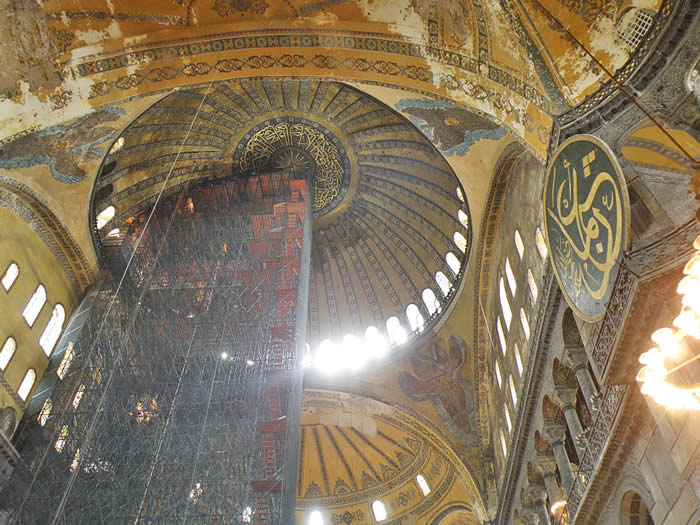
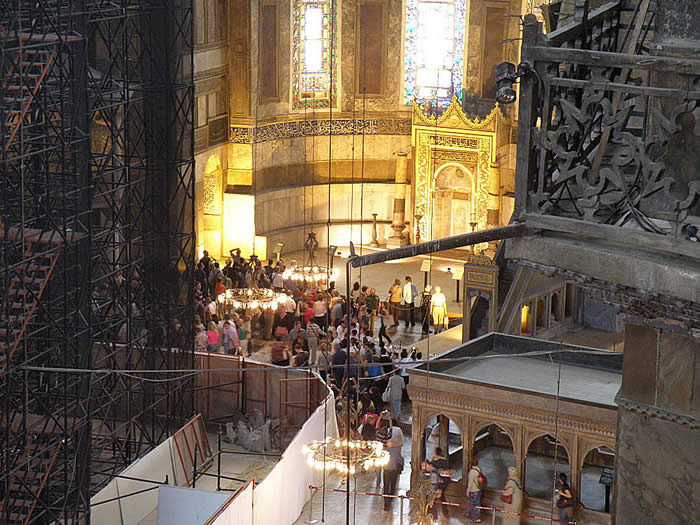
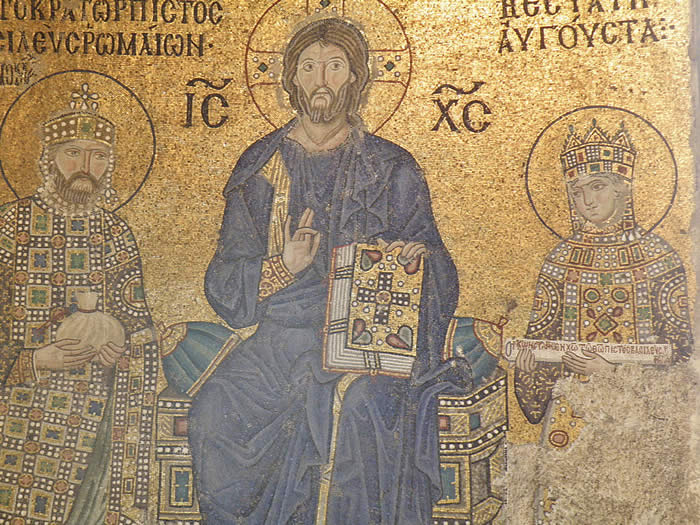
At far right is a photo of the dome – they are still doing some renovations. Next to it is one taken from a second story balcony. And the photo on the left is a fresco of Jesus with Constantine IX and the empress Zoe.
Topkapi Palace
After some time in Hagia Sophia, we walked to the Topkapi Palace. Today, this palace in Istanbul is a museum, but from 1465 to 1853, it was the official and primary residence in the city of the Ottoman Sultans. The palace was built atop a high point overlooking the Sea of Marmara and the Bosphorus, and was a setting for state occasions and royal entertainments and is a major tourist attraction today. On the far side of the Sea of Marmara is the Asian continent.
The complex has been expanded over the centuries, with many renovations such as after the 1509 earthquake and 1665 fire. After the end of the Ottoman Empire in 1921, Topkapi Palace was transformed by government decree to be a Museum in 1924, after Atatürk became president.
Istanbul Archaeological Museum
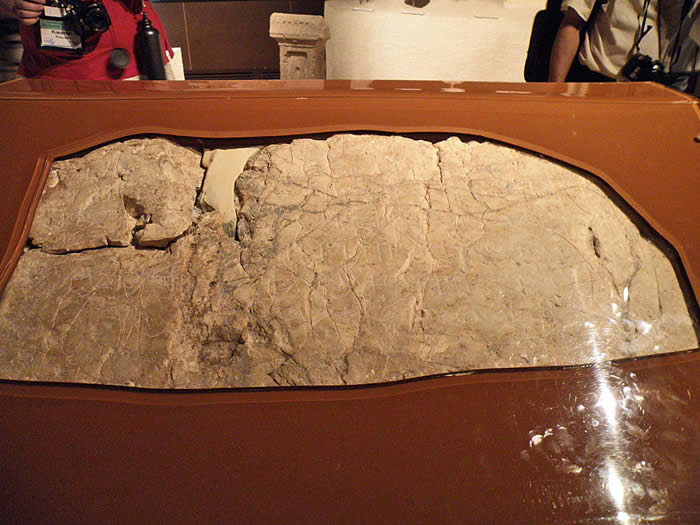
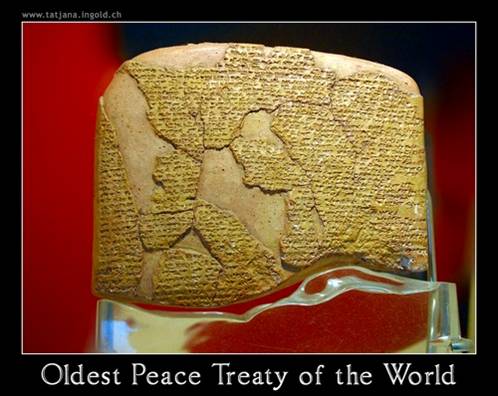
The Istanbul Archaeological Museum is located next to the Topkapi Palace. This is the one special thing I wanted to see which I knew was in this museum. You may remember my reporting on my second trip to Israel (2007) that we were able to wade through the spring water of Hezekiah’s Tunnel. Hezekiah’s Tunnel is in Jerusalem and stretches some 1750 feet from the Gihon Spring to the Pool of Siloam. When the worker finished the tunnel in about 701 B.C., they inscribed a record of their feat in its stone wall. During that lesson, I showed you this picture. It is the place where the depiction had been.
The tunnel was uncovered in 1838 by Edward Robinson, but he did not notice the inscription. In 1891, the inscription was found and cut from the stone wall, and taken to Istanbul, where it resides in this museum today.
Another artifact we saw in this museum was the oldest known recorded peace treaty. It is called the Kadesh Treaty, and was established between the Hittite King Hattuşiliş and Egyptian Pharaoh Ramses II. It is dated at 1269 B.C.


 Here is a group picture awaiting our flight at Seatac. The first leg of the trip is a lengthy 9½ hours to Frankfurt, Germany. Here is a picture of the sunset taken from the plane. Or is that a sunrise? The fact of the matter was we were flying well above the arctic circle, therefore, the sun never did completely set. I don’t know about the others, but I seldom sleep on the airplane.
Here is a group picture awaiting our flight at Seatac. The first leg of the trip is a lengthy 9½ hours to Frankfurt, Germany. Here is a picture of the sunset taken from the plane. Or is that a sunrise? The fact of the matter was we were flying well above the arctic circle, therefore, the sun never did completely set. I don’t know about the others, but I seldom sleep on the airplane.













